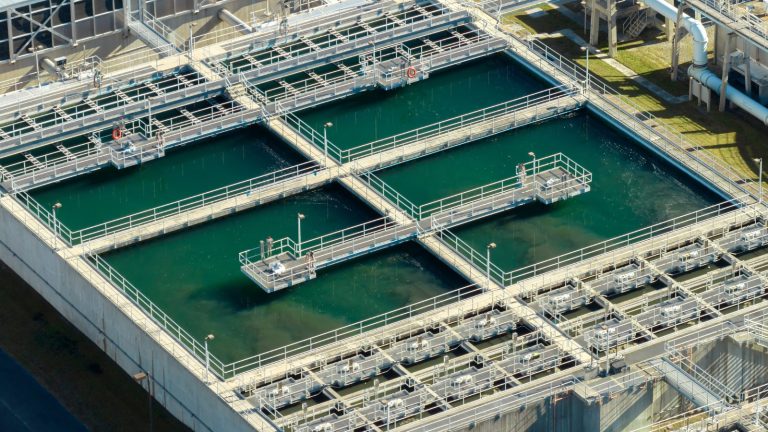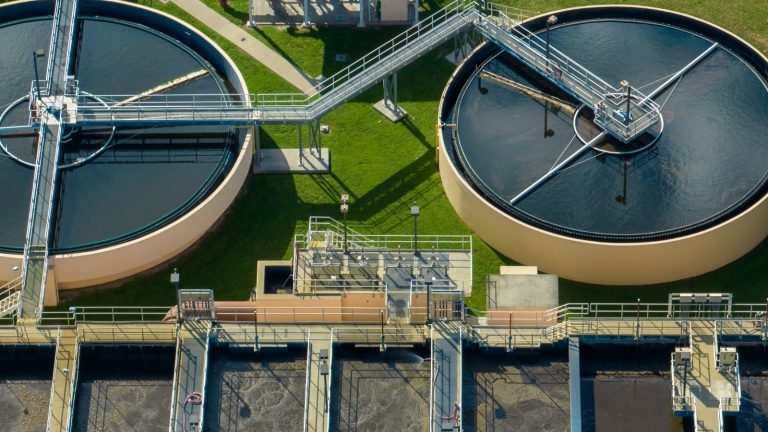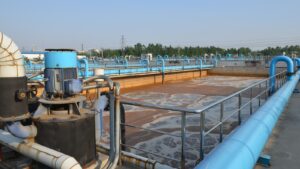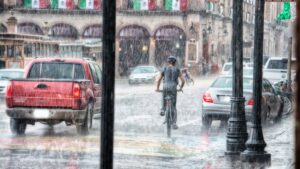Nowadays, artificial intelligence (AI) is an advancing technology. Simulating human intellect is a practice that has several applications. AI is now making an appearance in the wastewater treatment industry as a result of human operations’ efficiency, quickness, and independence. In order to give asset managers and operators end-to-end AI-driven data on a single screen, AI technology is a must-have upgrade in the Smart Wastewater Solution. It enables visualisation tools for simple data manipulation and monitoring via tools like GIS Maps, AI-driven models, smart visualisation dashboards, and more.
AI technology has enhanced asset systems to be sensitive to substantial parametric changes, such as sensing environmental changes, structural asset deterioration, failing asset operations, and detecting many other changes to learn and take timely action. As asset-intensive industrial practitioners spend billions of dollars maintaining asset networks, AI has been acknowledged as a technology that is essential to the majority of smart asset management, overhaul, and replacement initiatives. Continue reading to learn more about the critical role that AI technology is playing in the treatment of wastewater.
How AI Technology is Revolutionising Wastewater Treatment

Here are a few ways artificial intelligence (AI) might assist wastewater treatment operations as the demand for AI increases rapidly in asset-heavy industries.
Real-time Pipe Burst Detection
Network leakage is a significant problem in water distribution systems all around the world. This illustration shows an AI-based system that can identify not only equipment and other system faults but also pipe bursts and leaks. The pressure and flow sensor signals are automatically processed by the detection system in near real-time in order to forecast the signal values in the near future using ANN. These are then contrasted with incoming data in order to gather various types of evidence that the failed event actually occurred. The information gathered in this way is processed to determine the chance of the event occurring and to sound the appropriate alarms. The system successfully picks up on past bursts and other occurrences in order to forecast future ones. This detection system’s components can be included in an Event Detection System (EDS). EDS makes it possible to quickly and reliably detect pipe bursts and associated leaks; consequently, soon after their detection, EDS is able to actively avoid burst events by identifying equipment failures that frequently precede these events. EDS operates purely by collecting meaningful information from sensor data where bursts and other events leave their imprints, as it does not use a hydraulic or any other simulation model of the examined water distribution network. EDS is scalable and robust due to its ability to process data immediately. Water corporations have benefited from the usage of EDS in a number of ways, including reduced leakage, considerable customer supply minutes wasted, and large operational cost reductions.
Automated Asset Condition Assessment Using AI and Computer Vision
Urban drainage system pipes must be inspected regularly since undiscovered structural and other flaws could cause serious floods and pollution incidents. Typically, this inspection involves manually analysing CCTV videos that have been manually recorded. This method is time-consuming, expensive, and fairly unpredictable, making it occasionally unreliable. The AI-based system automates the analysis of CCTV footage and the discovery of pipe issues. It accomplishes this by utilising machine learning and computer vision techniques. To process and turn the CCTV images into useful data, image processing is done initially. With the aid of machine learning, this data is subsequently analysed to find flaws. This method is trained before it is used on a number of pre-labelled CCTV images. Water collection and reticulation pipe inspection operations are confidently and precisely carried out using the most recent CCTV and Laser technology. With the use of this technology, the time it takes to operate wastewater pipes can be reduced from months to a few seconds. Your wastewater pipe workers can skillfully keep an eye on things like sludge production rates, pipe breaks, cracks, positional deviations, mechanical wear, deformation, corrosion, and more with just one effort. Without laborious and risky on-site inspections, smart robots may be remotely controlled by pipe inspectors using CCTV and laser technologies. The IIoT-powered laser technology included in the people inspection robots will pass real-time video and store it on a shared cloud platform. With the help of sophisticated visual data analytics tools, the user may quickly extract footage from the drive and automatically gain insights into the state of the dynamically deteriorating wastewater pipes.
Predictive Wastewater Treatment Plant Control
Predictive and Prescriptive Analytics generates a historical database while simultaneously gathering real-time information on the plant’s flows and qualitative measurements, such as those for ammonia, nitrates, oxygen, phosphates, and dry solids. The programme then employs cutting-edge analytics and machine learning algorithms to forecast the plant’s wastewater flows and loads, oxygen requirements, chemical dosing requirements, and other demands (see Figure 2). Based on its projections and the plant’s prior performance, the system automatically optimises critical treatment operations in real-time. Additionally, it uses quantile regression techniques based on many data to find anomalies in the plant’s operations. The software learns to forecast the influent flow more accurately with time; after just one month, the prediction accuracy was 88%. Data is delivered to the company’s cloud solution after connecting to the plant’s Supervisory Control and Data Acquisition (SCADA) system to collect data and manage crucial processes. The software uses a Digital Twin to measure the actual performance of the on-premise system using data that is acquired in near real-time in the cloud. Operators can access more sophisticated data through the cloud, while real-time performance is still optimised by the on-premise component. In order to determine the most optimal and efficient set points for treatment, machine learning is used to first understand the efficiency of each process. The learned relationship is then applied to the prediction of the influent load.
Dive Into the Realm of AI

Rapid technological innovations in wastewater recycling and reuse are required to ensure environmental quality due to the rising global demand for water for usage in diverse industries. Water users must continually search for new technologies that improve process control for the elimination of chemical, biological, and other pollutants as requirements for the water treatment process become more stringent. In order to optimise treatment processes, plant operators require tools to choose appropriate operating settings to attain the desired effluent quality based on instantly influencing water quality. Through the most current developments in computer systems, Artificial Intelligence techniques have recently demonstrated promising outcomes in monitoring. A variety of issues with data organisation and intelligent water services exist in the water sector, and if these issues are resolved, AI offers enormous potential. In particular, genetic algorithms (GA) and artificial neural networks (ANNs) have been heavily utilised in water treatment for a variety of applications.







